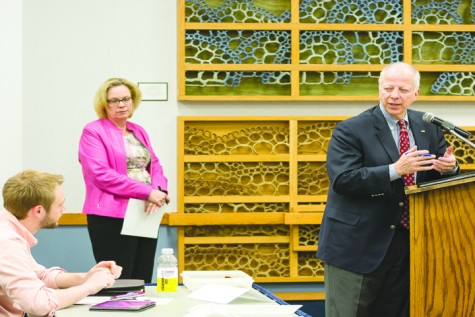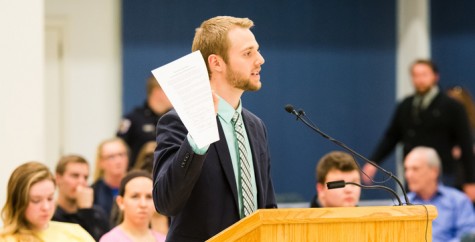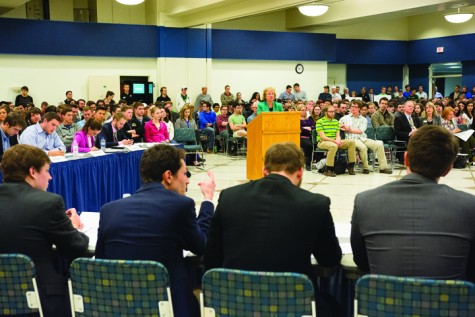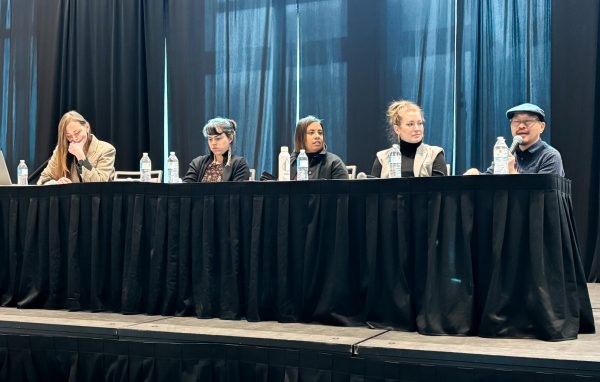Franklin speaks out against tuition model
UND is looking at implementing new tuition models that would encourage students to graduate in four years, but the plans have caused some controversy after students brought them to the attention of the public.
In the three proposals UND presented to some members of Student Senate in the beginning of March, one model would increase tuition by 10.5 percent and the other by 12.3 percent for students enrolled in 15 to 18 credits.
The third model said it would include a set rate of tuition for students for four years, but it did not say what that rate would be.
UND’s current tuition plan allows students to be considered full-time by taking at least 12 credits, and the standard rate per credit is the same up to 21 credits.
In the new models, students taking more than 18 credits would see a huge price jump.
“I was very surprised that this was even proposed,” Student Body President Tanner Franklin said. “With a little more thought, we could make this not so bearing on students. Unfortunately, even with continued appropriations from the state, there is still an increased cost for students.”
Franklin said UND was initially supposed to present its proposals to the North Dakota State Board of Higher Education at the beginning of March. It was pushed back to the end of March, and then pushed back again to the middle of April, close to the end of the legislative session.
Franklin said something similar happened four years ago at NDSU, when the school got appropriations from the state and proposed a drastic tuition hike once the legislative session ended that took effect.
“I do not want that to happen to students at UND,” Franklin said.
The new models that have been proposed are aimed at increasing transparency in costs. Course fees would be rolled into tuition, and program fees would be separate. The program fees would be extra on top of the base tuition rate. Course fees would be paid by all students.
“I’ve paid less than $100 in my college career in course fees,” Franklin said. “Every student would be paying course fees for every other student and themselves. That is my understanding of the models. They would not be saving students all that much money.”
The third model, which would lock in a tuition rate for a student for four years, also includes other incentives such as reducing the number of credits needed to graduate from 125 to 120 and having a four-year guarantee program.
The program would allow students to fill out a four-year class schedule, and the university would guarantee those courses would be available — or else pay back the students.
“Conceptually it’s the best option, but without seeing numbers, I can’t commit to that,” Franklin said.
Vice President for Finance and Operations Alice Brekke told the Grand Forks Herald the school is not doing this to try and make more money.
“The whole equation is intended to be revenue neutral to the institution,” Brekke told the Herald. “This is not designed to generate more revenue to the institution. This is designed to incentivize certain kinds of things and to enable movement in what the board has determined is an important strategic direction.”
Franklin said UND administration is striving for more clarity with its new models, but the existing models don’t encourage that.
“They want transparency and to show students the cost up front,” Franklin said. “But there is a breakdown of fees on Campus Connection now. If you are lumping it all together, you have no idea where that money is going. This is public information and not sensitive information. We just want to let people know what we’re thinking.”
The North Dakota Legislature is looking at several bills that range from helping students with the cost of tuition to allowing the legislature to change tuition prices.
UND is scheduled to present its proposals to the State Board of Higher Education on April 17. The North Dakota Legislative Session ends on April 29.
Megan Hoffman is a staff writer for The Dakota Student. She can be reached at megan.hoffman@my.und.edu.










